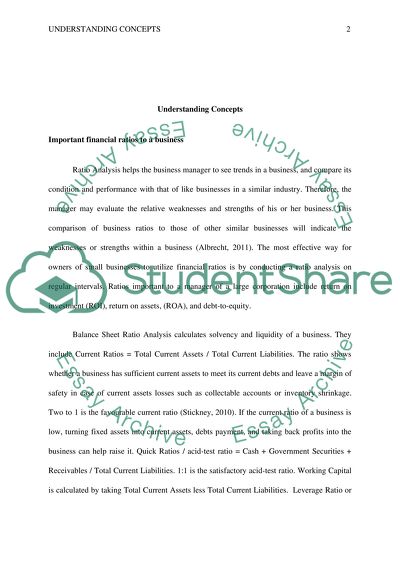Cite this document
(“Understanding Concepts: Important financial ratios to a business Essay”, n.d.)
Understanding Concepts: Important financial ratios to a business Essay. Retrieved from https://studentshare.org/finance-accounting/1469051-understanding-concepts-important-financial-ratios-to-a-business
Understanding Concepts: Important financial ratios to a business Essay. Retrieved from https://studentshare.org/finance-accounting/1469051-understanding-concepts-important-financial-ratios-to-a-business
(Understanding Concepts: Important Financial Ratios to a Business Essay)
Understanding Concepts: Important Financial Ratios to a Business Essay. https://studentshare.org/finance-accounting/1469051-understanding-concepts-important-financial-ratios-to-a-business.
Understanding Concepts: Important Financial Ratios to a Business Essay. https://studentshare.org/finance-accounting/1469051-understanding-concepts-important-financial-ratios-to-a-business.
“Understanding Concepts: Important Financial Ratios to a Business Essay”, n.d. https://studentshare.org/finance-accounting/1469051-understanding-concepts-important-financial-ratios-to-a-business.


